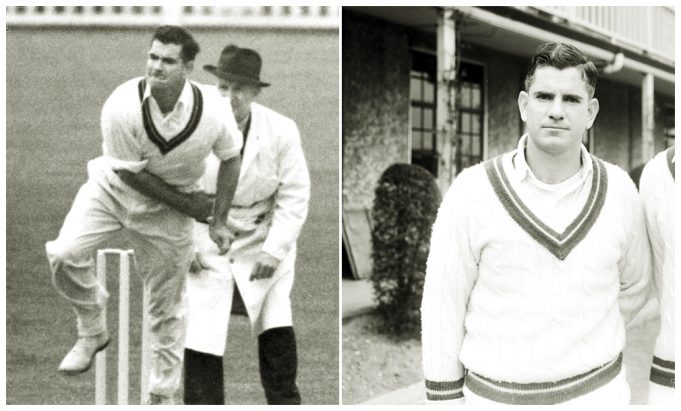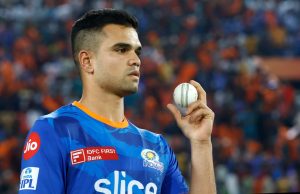If there ever was one gloriously repetitive cricketing statement one was asked about Cricket, then perhaps the following would appear as the king of all cliches:
“Records are meant to be broken.”
But not really. Or let’s say, not always.
There are countless records that have stood the test of time and have tested the durability of cricketers whom they’ve outlived.
For the die-hard fan of batting, for whom, bowlers only happen to exist in a batsman’s game, the primary example would be Sachin Tendulkar’s record of a century of international hundreds.
Which other record is yet to be broken?
It’s been fourteen long years since anyone came even close to breaking Sangakkara and Mahela’s record stand of 624 runs against an attack that featured the mighty Dale Steyn.
Want another?
Brian Lara‘s mountain of runs, 400 of them, have stood the test of time for sixteen long years. Many came close- such as Warner, Clarke, Gayle too, but all waned out trying.
But is that all?
In sport, as also in life, it’s often said no one remembers who came second, for history is only made by the victory; the one who wins, the one who stood first.
History has served, time and again, avid reminders about the above.
No one remembers the name of the second man who stood on the moon for all recollect Neil Armstrong. Likewise, it’s easy to recollect the name of Thomas Burke, the first Olympic champion ever (USA), but hard to recollect those who came later.
So by that logic- unless you are a cricketing nerd or a number- cruncher- you won’t really remember who stood seventh in an important facet connected to Cricket.
To delve a bit deep- who compiled the stand for the seventh-highest partnership in that elite format of the sport where success isn’t measured by the length of sixes but rather by the magnitude of one’s focus.
It’s a record that’s stood unbroken for no fewer than six and a half decades, one that yielded 347 runs. A record for which neither among the two iconic West Indians- Sir Viv Richards or Sir Gary Sobers were involved and ditto for other Caribbean heroes like Brian Charles Lara or Shivnarine Chanderpaul.
Though, to this day, one cannot possibly decide what stood out more in that mind-boggling effort.
Was it the mountain of runs compiled or was it the opponent that the gigantic record came against, the latter being a Keith Miller, Richie Benaud, Ray Lindwall-powered Australian line-up.
What can’t be said is when might the 1955-made record be broken or how soon.
What can be said, though, is that in compiling these precious runs, Denis Atkinson’s 219 runs stood out.
A frustrating effort marked by unbent focus and great resolve that left the Australians head-scratching saw one of Barbados’s finest exports to West Indies cricket rise to the occasion with Clairmonte Depeiaza- also from Barbados- at the other end.
In a Test match where Australia conjured a mammoth 668 runs, hammering the West Indians in the West Indies, one man stood tall to lead the fightback for his team when a pantheon of greats including Sir Sobers and the 3 great Ws- Sir Clyde Walcott, Sir Frank Worrell, and Sir Everton Weekes- failed to fire.
That very man, that dignified street-smart Caribbean all-rounder that one needs to talk a great deal more than what one usually does- would have turned 95 today (August 9).
In reaching a career-best score of 219 patiently and bravely-compiled runs, much to West Indies’ great fortune, Denis Atkinson was joined by a man mentally tough as any- Clairmonte Depeiaza.
The two joined hands to turn the tables on an Australia whose iconic Australian trinity of Lindwall, Benaud and Miller had already wrecked havoc.
Time and again, cricket has made love to tales of a great fightback. To this day, the fan remembers with much delight the Kolkata 2001 Test with Dravid and Laxman at the helm of affairs.
But 65 years back with destruction happening from both ends to his beloved West Indies, and that too, on his home turf with the crowds displeased and agonised, something had to give.
And thus arose Denis Atkinson to make his way into record books along with a dear friend, also a Bajan, interestingly so in the most unlikeliest of situations and against a daunting opponent.
It’s one thing to strike a comeback hundred and save the fledgeling fortunes of a side that’s going nowhere.
But it’s something utterly indescribable when you step in as captain to save an embattled ship with several able captains on board.
Not that Denis Atkinson’s remarkable century, the only in his 22-Test career was the only rescue effort.
In the very year of his debut, circa 1948, Denis Atkinson joined forces with the bespectacled Robert Christiani to forge a vital 106-run stand against India.
That the remarkable effort came in India and that too, in its cricket-obsessed national capital’s stadium that today is known as Arun Jaitley stadium made the fightback even more special.
In an era where the Worrells, Weekes’ and Walcotts’ were much like predators unleashed upon an unsuspecting opponent, Denis Atkins was a firefighter for a West Indies big on both- legends as well as record-breaking feats.
And it weren’t runs alone that the diligent batsman known for his combative instincts produced.
While on the face of it his 47 Test wickets may never suggest that facing the Barbadian the batsmen suffered great exasperation, that there were three fifers involved in that lot should give sufficient example of Atkinson’s ability to produce results with his compact medium pace.
This included a sensational 7-for against a Noel McGregor, Tony MacGibbon, Don Taylor and John Reid-powered New Zealand attack.
Moreover, that he went wicketless in the first inning before suddenly erupting with a back-breaking spell showed Denis Atkinson’s penchant at keeping at it despite minor heartbreaks or temporary lows.
That Auckland spell would also be remembered for the fact that in a contest where the West Indies’ first inning total was a rather lacklustre- as also uncharacteristically low- 145, Atkinson had fired 28 of those runs, besides firing the only six from the West Indies stable.
In an age where leadership blossomed like bright lilies in an English garden, Denis Atkinson made himself responsible to show the way, instead of relying on a star-studded featuring one huge name after another who’d come good any given day.
A marked difference in the approach with which a West Indian conducts himself today where power-hitting and ball-bashing defines success, innovative captaincy and daring efforts amid duress maybe not all that much.
Though what also set Atkins apart from the rest was that he was adaptable to change and unafraid to experiment with bowling. Depending on the need of the hour and the surface he could juggle- without the slightest of hesitations- between medium pace and off-spin.
This, effectively, allowed the likes of legendary spinners such as Sonny Ramadhin some breathing space knowing that the captain would chip in with useful off-breaks and wear the bowlers down.
And while his contributions might not have produced a tower as lanky as the Eiffel, his incredible ability to spot talent that could reach Himalayan heights endeared Atkinson to a barrage of Caribbean fans for whom cricket was the respite from life’s daily chores in an age, where in stark contrast to today, it hadn’t yet become a symbol of ‘entertainment.’
What we remember today and will for times to come would be Sir Gary Sobers‘ majestic 365 and his all-round brilliance.
But guess who spotted the great man first and inducted him into the West Indian set-up?
It’s the very man who we ought to celebrate a great deal more than we actually do- Denis Atkinson.












